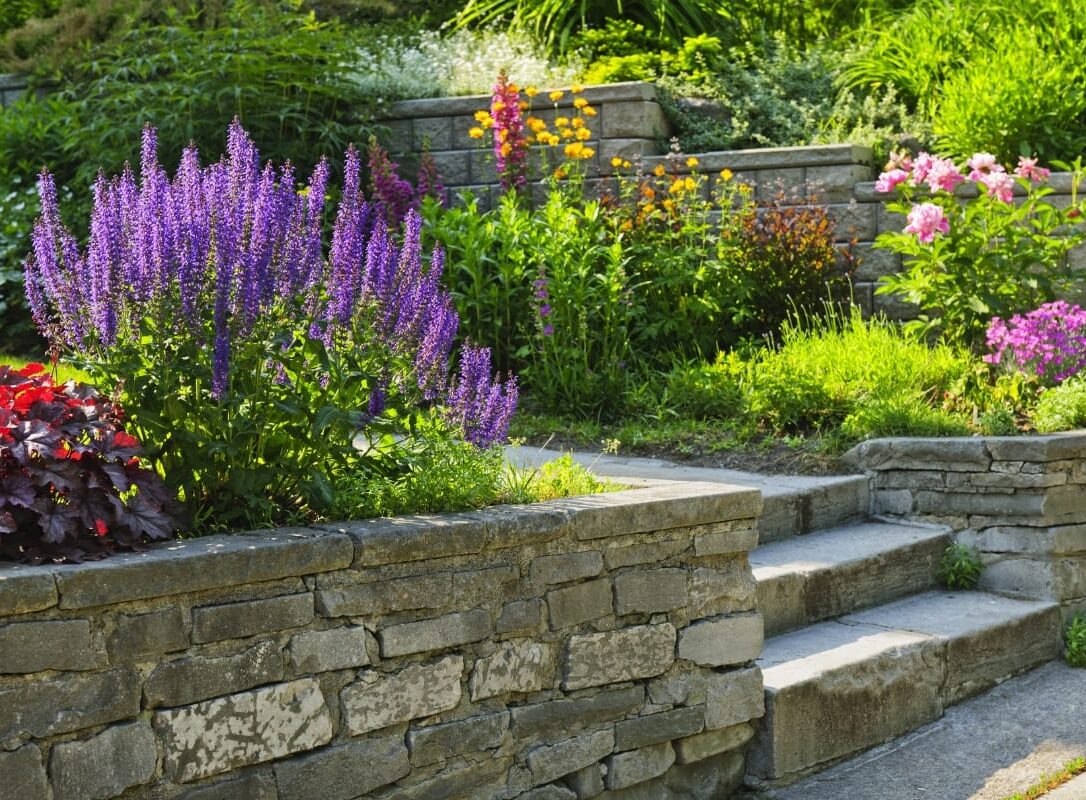Retaining walls do more than just hold back soil—they play a vital role in managing water flow and elevating the look of your outdoor space. In areas prone to heavy rain or sloped terrain, these structures can help prevent erosion and direct water away from your home’s foundation. But functionality doesn’t have to sacrifice beauty. With the right materials and design, retaining walls can add visual interest, define garden beds, and create stylish tiers that give your landscape depth and personality. In this article, we’ll explore how retaining walls blend form and function to enhance your property’s value and appeal.
Why Retaining Walls Are the Secret to a Stylish, Flood-Free Yard
The Role of Retaining Walls in Improving Drainage
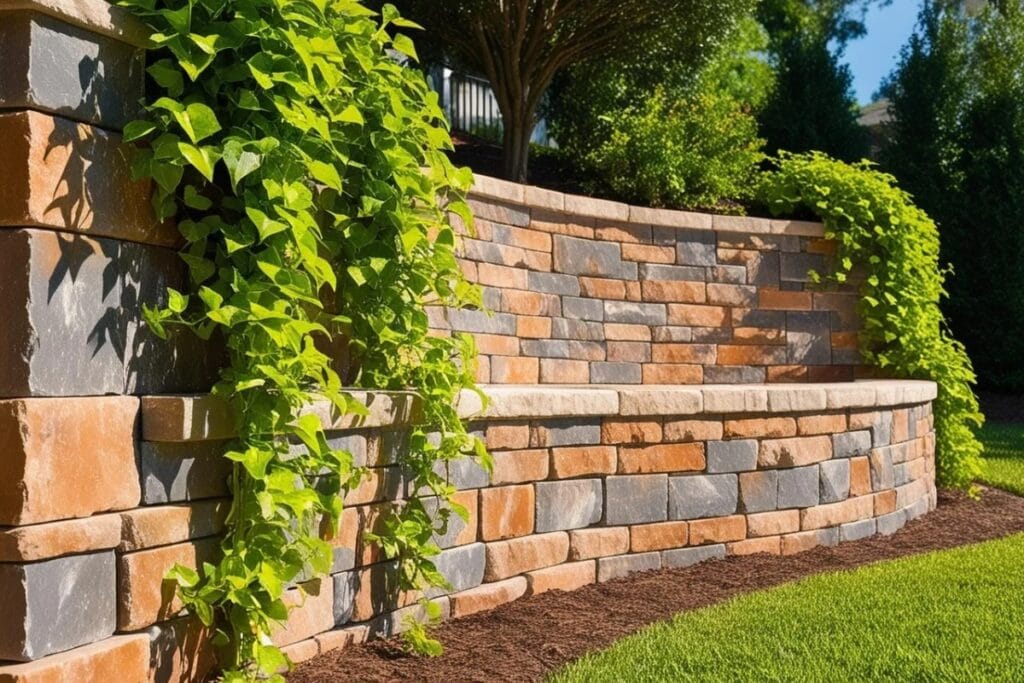
Good drainage is key to keeping a landscape safe and functional, and retaining walls can play a big part in making that happen. When heavy rain falls or snow melts quickly, water can soak into the ground and cause problems like erosion, pooling, and even damage to a home’s foundation. Retaining walls help control how water moves through a yard by holding back soil on slopes and creating flatter, more stable surfaces.
When installed correctly, retaining walls can redirect water away from areas where it might do harm. This includes protecting garden beds, patios, and the base of your home. They help slow down and guide water flow, making it less likely to erode the soil or cause flooding in low spots. These walls also help reduce pressure in the soil—something known as hydrostatic pressure—that can build up behind the scenes and lead to cracks in driveways, retaining structures, or basement walls.
To be effective, retaining walls need proper drainage built into the design. Features like gravel backfill, perforated drain pipes, and weep holes allow water to escape instead of building up behind the wall. These systems work together to move excess moisture into safer areas, like drainage ditches or stormwater pipes.
The gravel and pipes not only help prevent water buildup but also keep the soil behind the wall from becoming too heavy. When soil gets saturated, it becomes unstable and more likely to shift. That kind of pressure can eventually cause a wall to lean or collapse. Proper drainage helps avoid that.
In colder areas, standing water behind a wall can freeze and expand, causing frost heave. By keeping water moving and not allowing it to collect in one place, retaining walls with good drainage systems help avoid this seasonal damage too.
In short, retaining walls do more than just hold back dirt—they help manage water and protect your yard and home from long-term issues. When paired with well-planned drainage, they offer a smart solution for sloped properties or any landscape prone to water buildup. Regular checks and proper installation go a long way in making sure the system works as it should..
Types of Retaining Walls for Efficient Water Management
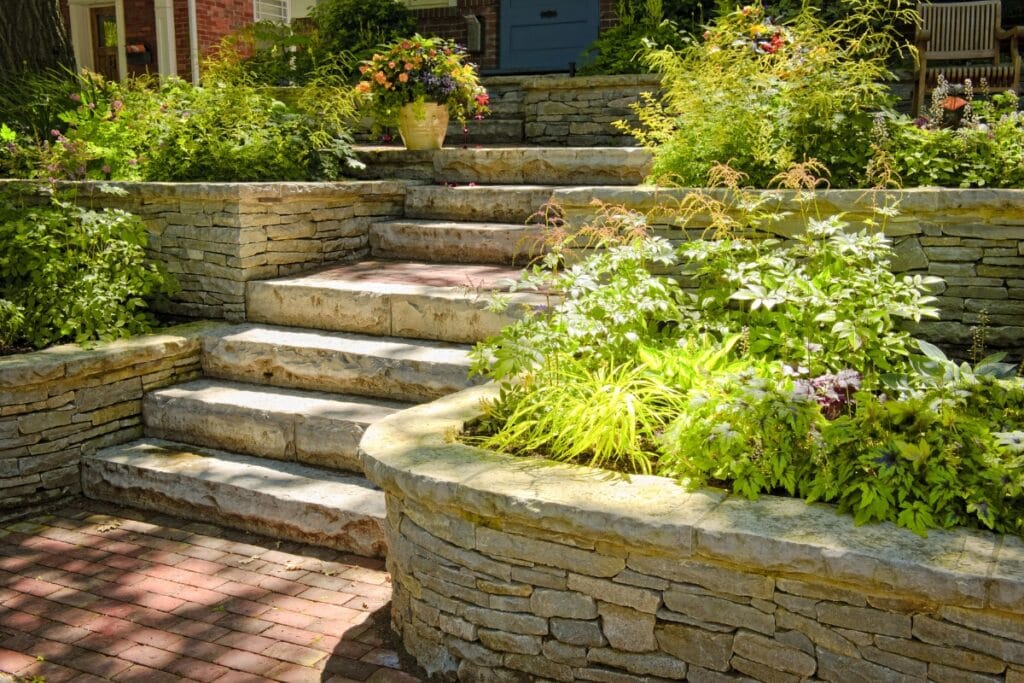
Choosing the appropriate type of retaining wall depends on site conditions, budget, and the desired aesthetic outcome. Each wall design offers unique drainage benefits and structural characteristics. Understanding these options helps homeowners strike the perfect balance between form and function in water management.
Gravity walls rely on their substantial mass—typically built from heavy materials like stone or concrete—to resist lateral earth pressure without additional reinforcement. Their bulk and density make them excellent at preventing soil displacement and directing water flow through integrated weep holes. Cantilevered retaining walls, on the other hand, use a reinforced concrete slab footing that leverages the weight of the retained material to provide stability. These walls are thinner than gravity walls, saving space while still accommodating drainage pipes and gravel backfill for efficient water release.
Segmental block walls are modular systems made of interlocking concrete units. Their design often incorporates built-in cavities and drainage channels, allowing for easy installation of perforated pipes and aggregate behind the wall. Anchored walls use steel cables or rods drilled deep into the hillside for additional support, ideal for high or steep slopes. Gabion walls—wire baskets filled with stone—provide exceptional permeability, allowing water to pass freely through the structure while maintaining stability. By selecting the right wall type, you can optimize both structural performance and water management for your landscape.
Design Considerations for Stylish Retaining Walls
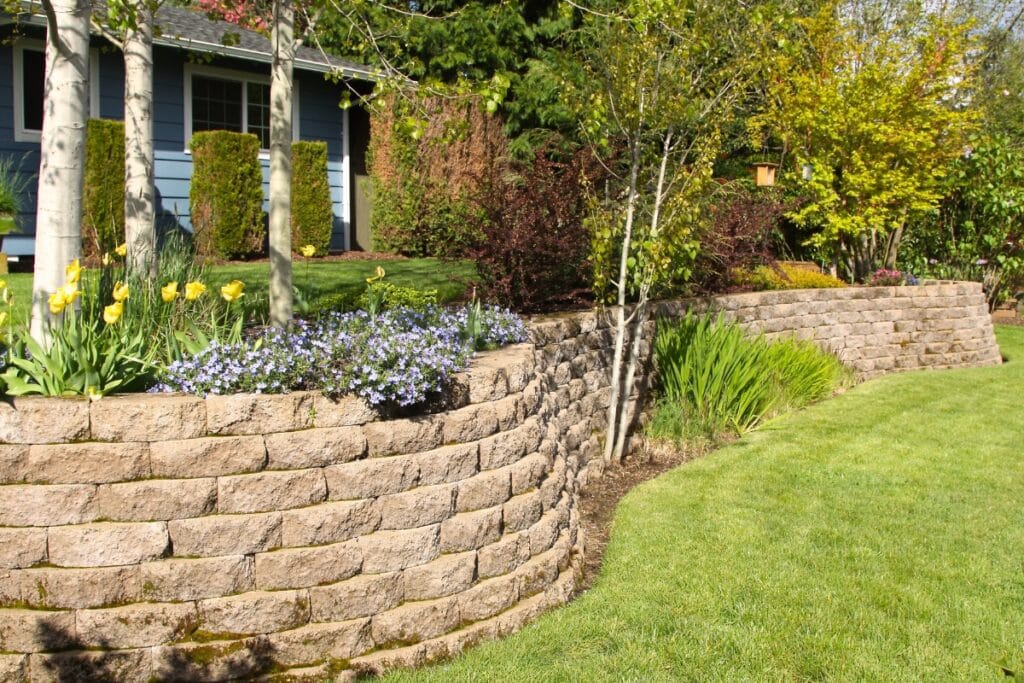
Retaining walls are often built for practical reasons like holding back soil or managing drainage, but they can also add style and structure to your yard. With the right design choices, a retaining wall can become a key feature that improves both the function and look of your outdoor space.
Start by thinking about the size and shape of your yard. A wall that is too tall or bulky can overwhelm a small space, while a short wall might get lost in a large, open area. The angle of the slope also matters. Steeper slopes may require taller or multiple walls to keep everything in place. Choose materials that fit in with the rest of your landscape. Stone, brick, concrete blocks, or even wood can all work well depending on the style of your home and garden. Matching the wall to other elements—like a patio, walkway, or raised garden bed—helps tie everything together. Using similar materials or colors creates a more seamless look.
To make your retaining wall more visually interesting, consider adding curves instead of building it straight. Curved lines can soften the overall feel and give your yard a more natural flow. If you have a steep slope, you can use a series of smaller, stepped walls instead of one large one. This creates levels in your yard that can be used for planting or seating.
Built-in benches or wide wall caps can double as seating areas. If the wall is near a patio or fire pit, this can be a smart way to add extra seating without crowding the space. Adding low-voltage lighting along the top or base of the wall can also improve visibility and create a warm, inviting atmosphere in the evenings.
Capstones, decorative edging, or textured blocks can bring in a finished look without a lot of extra cost. These small touches help a wall look intentional and well designed rather than just functional. In the end, a retaining wall does not have to be just a structural fix. With a little planning, it can also become a standout feature that adds lasting value and visual appeal to your outdoor space.
Incorporating Drainage Systems within Retaining Walls
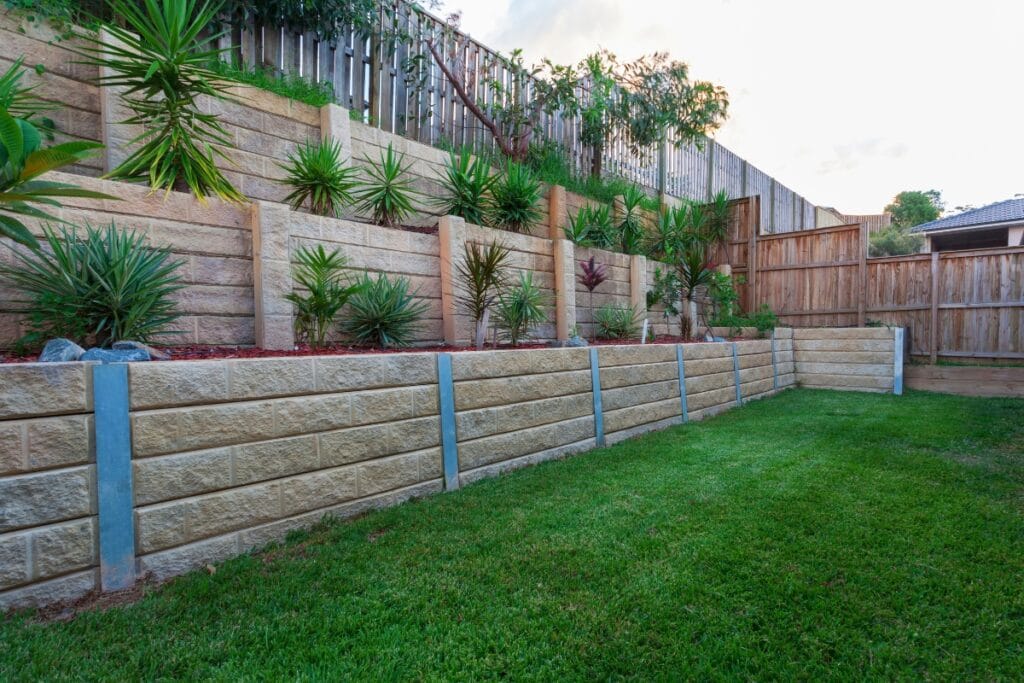
Adding proper drainage to a retaining wall is one of the most important steps in making sure it lasts. Without a way for water to escape, pressure can build up behind the wall over time. This pressure, known as hydrostatic pressure, can lead to bulging, cracking, or even total wall failure. A good drainage setup helps reduce that risk and keeps the wall stable year after year.
The most common solution starts with a layer of gravel or crushed stone behind the wall. This allows water to move freely instead of soaking into the soil. Along with that, a perforated drainpipe—usually referred to as a drain tile—is often installed near the base of the wall. This pipe collects and redirects water away from the wall, typically toward a drainage basin or safe runoff area.
Weep holes are another simple but important feature. These are small openings built into the bottom of the wall to let trapped water escape. Without them, water can pool behind the wall, especially during heavy rain or snowmelt.
When planning your drainage system, take into account the slope of the yard, how much water the area typically sees, and the type of soil. For example, clay soil drains slowly, which means the system may need extra support like a larger gravel layer or additional drainpipe. On the other hand, sandy soil allows water to pass through more easily, but may need erosion control measures to keep it in place.
In some cases, a French drain may be installed in front of or behind the wall. This type of system uses a gravel-filled trench with a pipe inside to intercept groundwater and carry it away. It works well in areas with high water tables or frequent heavy rains. All these parts—gravel, pipe, weep holes, and slope management—work together to prevent water buildup. Skipping drainage can lead to expensive repairs, even if the wall itself is built with strong materials.
Selecting Materials for Durability and Aesthetics
Choosing the right material for a retaining wall is about more than just looks. It also affects how long the wall lasts, how much maintenance it needs, and how well it handles water and pressure. The right material should match your landscape style, budget, and local conditions.
Natural stone is a popular choice for its strength and timeless appearance. Materials like granite, limestone, or fieldstone offer a range of colors and textures that blend well with natural surroundings. Stone walls are known for durability and can last for decades, but they are often more expensive and take longer to install. Cutting and stacking irregular shapes requires skill and labor, which can drive up the cost.
Concrete block is a more affordable and flexible option. Manufactured in uniform sizes, these blocks are easier to install and often come with built-in channels for drainage. They are available in different colors and surface textures, so they can mimic the look of stone while staying within budget. This makes concrete block walls a good balance of function and appearance, especially for larger projects.
Timber walls made from treated wood or railroad ties offer a more casual, rustic look. They work well for smaller walls or garden borders. However, wood does not last as long as stone or concrete. It may rot, attract insects, or warp over time, especially in wet climates. Regular maintenance and good drainage are important for extending the life of timber walls.
Gabion walls are made by filling wire baskets with rocks. This style gives a rugged, modern look and allows water to pass through easily, which helps with drainage. Gabions are often used in erosion control and eco-friendly designs. They are low maintenance and can be filled with local stone to match the environment.
Newer options include composite materials and recycled plastics. These are designed to resist rot, insects, and weather damage, and they require very little upkeep. While not as common yet, they are becoming more popular in sustainable landscaping.
When choosing a material, think about the slope of your yard, how much water the wall will need to handle, and the overall style you want. The right choice can improve both the function and appearance of your outdoor space.
Professional Installation of Retaining Walls for Optimal Functionality
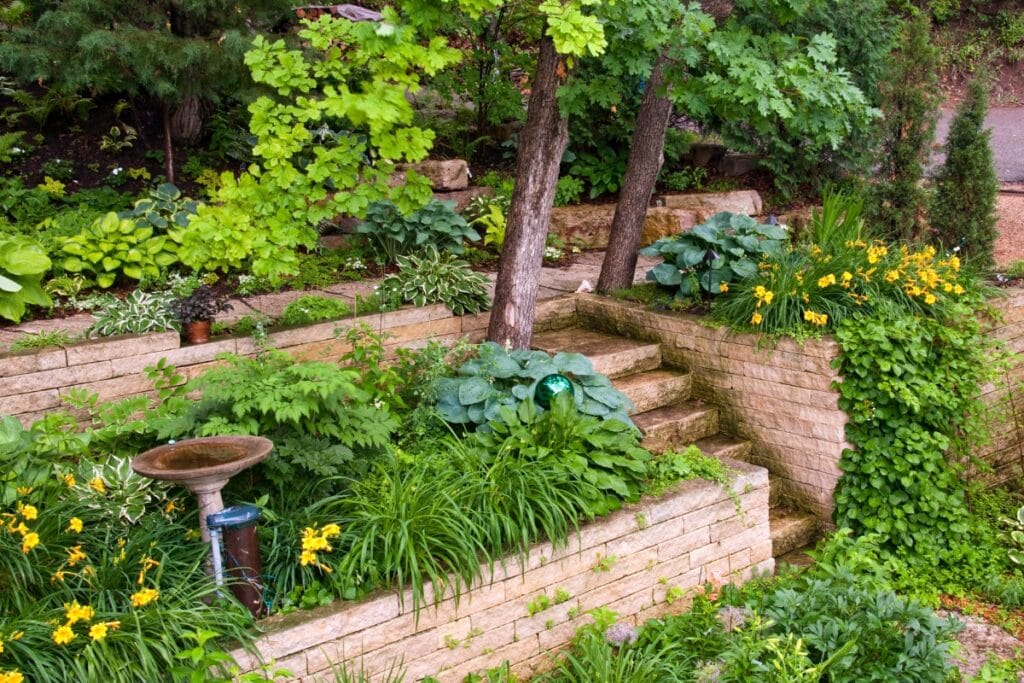
While building a retaining wall might seem like a manageable DIY project, many situations call for professional installation. The process is more complex than it looks, especially when dealing with taller walls, sloped yards, or areas with drainage issues. Hiring a qualified contractor helps ensure the wall is both safe and built to last.
Professional installers bring the right tools, experience, and understanding of local building codes. They know how to assess a site properly, including checking the type of soil, slope angle, and how water moves through the area. These details influence the wall’s height, thickness, and the type of materials that should be used. A poorly designed wall may look fine at first but can fail over time if it is not built on a solid foundation or does not manage water correctly.
Site preparation is a big part of the job. Proper excavation and compaction are essential to prevent the wall from settling or leaning. Professionals know how to dig the right base, compact the soil, and use backfill materials correctly. They also install sub-surface drainage systems like perforated pipes and gravel to keep water from building up behind the wall. Without proper drainage, water pressure can cause cracks or even a full collapse.
A licensed contractor will also take care of permits and inspections if your local codes require them. This step is often overlooked in DIY builds, leading to fines or the need for costly corrections. A professional will make sure everything is done up to code from the start.
In addition to structural know-how, contractors can help with design. They will guide you in choosing materials that work for your budget, style, and site conditions. Whether it is concrete block, natural stone, or timber, their input can help you make informed decisions that balance looks and performance. When you hire a professional, you are investing in more than just the wall—you are investing in long-term stability and fewer future headaches. A well-built retaining wall should do its job quietly for years, protecting your property and enhancing your outdoor space without constant maintenance or worry.
Landscaping around Retaining Walls to Enhance Visual Appeal
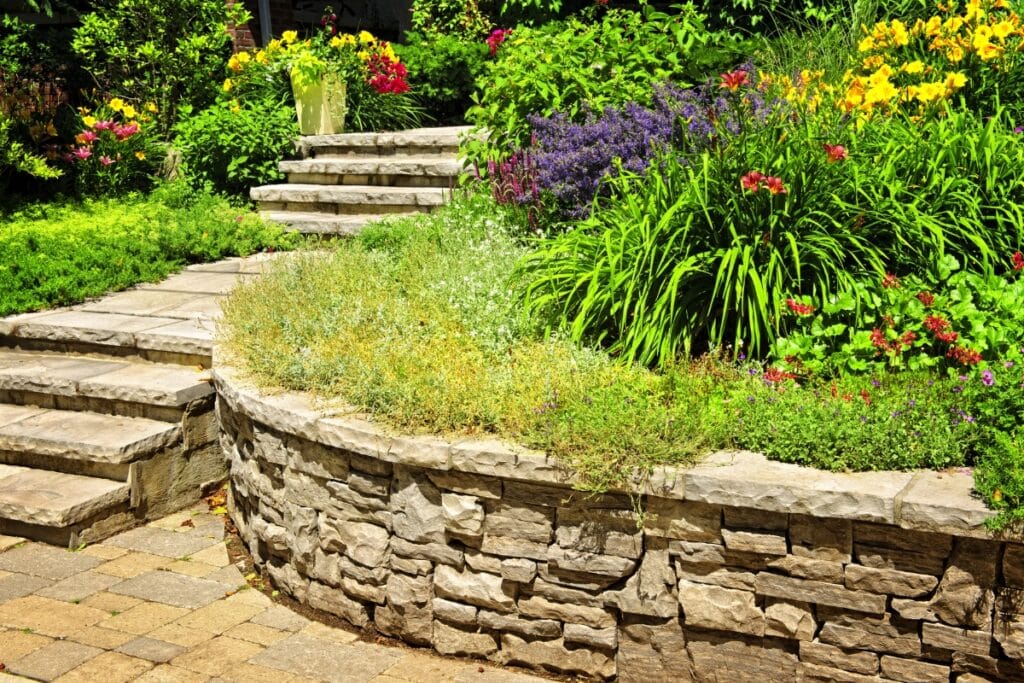
After a retaining wall is installed, the right landscaping can help it blend into your yard and improve the overall look of your outdoor space. Rather than leaving the wall as a plain, functional barrier, adding plants and small design elements makes it feel like part of the landscape.
Start by choosing plants that match the size and shape of your wall. For multi-level or tiered walls, use a mix of plant heights to add depth. Taller plants like ornamental grasses, shrubs, or small trees can go behind the wall, especially if it is near a property line. These help provide privacy and can soften the view from behind. In front of lower walls, plant flowering perennials, low-growing evergreens, or seasonal flowers to add color and fill the space without hiding the wall entirely.
Groundcovers such as creeping thyme, sedum, or trailing ivy work well along the top edge of a wall. These plants will naturally drape over the edge, breaking up sharp lines and adding a more organic feel. Climbing vines can also be trained to grow up nearby trellises or fences, adding height and interest.
For a clean and low-maintenance finish, add mulch around the plants. This helps with moisture control and keeps weeds down. It also gives the landscape a finished look.
Lighting is another simple but effective way to enhance your retaining wall. Install low-voltage LED lights along the base or behind capstones to highlight textures and make the area safer to navigate at night. Uplighting can draw attention to surrounding plants or small trees and create a cozy evening atmosphere.
If you want a more polished appearance, consider edging materials, decorative gravel, or even built-in planters as part of the wall itself. These details can help tie the wall into the rest of your yard’s design.
No matter your style—whether it’s modern and clean or more relaxed and natural—landscaping around a retaining wall adds value and visual appeal. With the right mix of plants, lighting, and finishing touches, the wall becomes part of the scenery rather than something that stands apart.
Maintenance Practices to Ensure Longevity and Performance
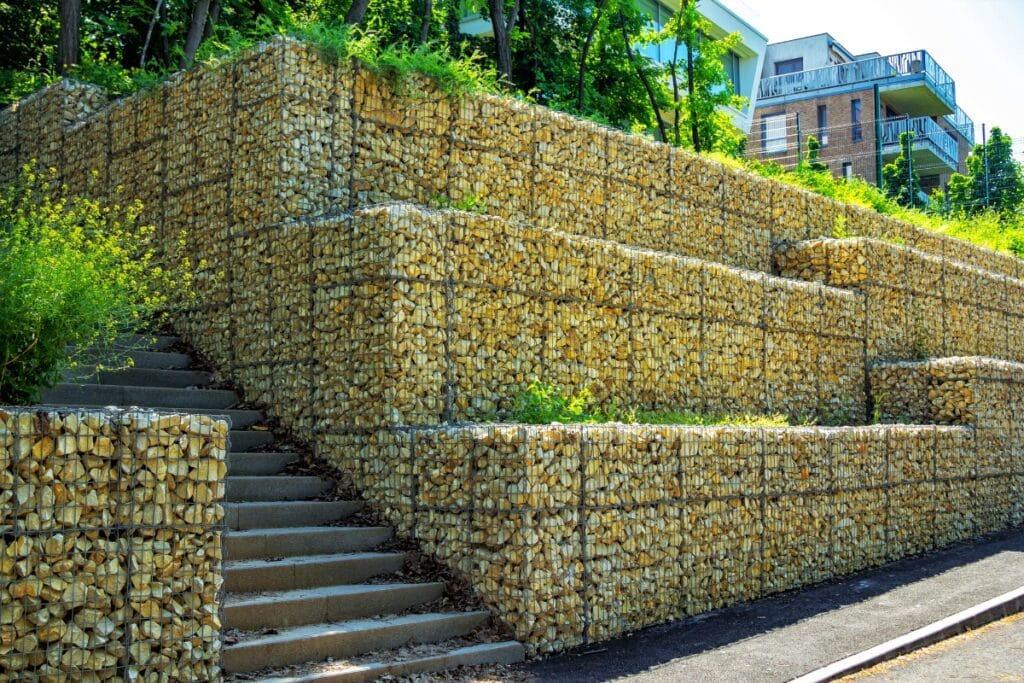
Retaining walls are built to last, but like any outdoor structure, they need regular maintenance to stay in good shape. Keeping up with simple upkeep tasks can help prevent bigger problems and extend the life of the wall.
Start by inspecting your retaining wall a few times a year. Look for cracks, leaning sections, or areas where the soil has shifted or settled. These signs can indicate underlying issues like drainage problems or pressure buildup behind the wall. If caught early, most of these problems can be addressed without major repairs.
Check for signs of erosion or water pooling near the base of the wall. Water is one of the biggest threats to retaining walls, especially if it is not draining properly. Clear out leaves, dirt, or other debris from weep holes, drainage pipes, and gravel backfill. These features help reduce pressure by allowing water to escape. When they are blocked, water can build up behind the wall and cause it to fail over time.
In colder regions, it is important to remove snow and ice buildup, especially from the top and base of the wall. Freeze-thaw cycles can cause cracks in masonry or cause timber to warp. Avoid using de-icing salts directly on the wall, as they can damage concrete and stone surfaces.
Different materials have different maintenance needs. For natural stone or concrete block walls, applying a sealant every few years helps protect the surface from moisture and staining. Timber walls may need to be restained or treated with a water-repellent sealant to protect against rot, mold, and insect damage.
Also, keep an eye on the soil and gravel around the wall. If soil has washed away from the front or if the gravel backfill has settled, regrade the area and add fresh material. This helps maintain proper drainage and supports the wall’s structure.
Finally, repair small problems before they get worse. Tighten loose blocks or stones, replace damaged wood, and reinforce any weakened sections. These small fixes can save you from more expensive repairs later on.
Benefits of Investing in Retaining Walls for Property Value Appreciation
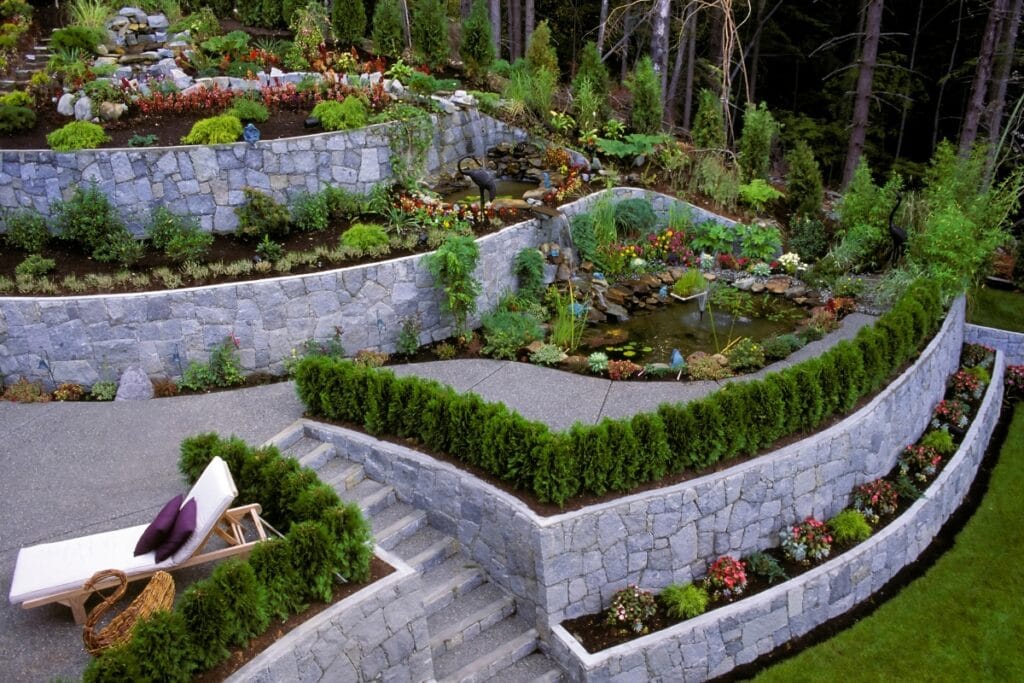
Retaining walls do more than hold back soil. When properly planned and installed, they provide real benefits that can increase both the function and value of your property. Whether you’re solving a drainage issue or upgrading your landscaping, a retaining wall is a smart investment that can pay off in more ways than one.
One of the most noticeable benefits is the creation of usable outdoor space. On sloped lots, retaining walls can level out areas for patios, garden beds, or flat lawns. This added space can be used for outdoor seating, play areas, or planting zones that would not be possible otherwise. These changes improve the way you use your yard while also making it more appealing to potential buyers.
A well-built retaining wall can also improve your home’s curb appeal. Clean lines, attractive materials, and thoughtful design help your landscaping stand out and look more polished. In a competitive housing market, a good first impression can make a difference. Buyers often see high-quality landscaping as a sign that the home has been well cared for, which can lead to faster sales and stronger offers.
The practical benefits are just as important. Retaining walls help manage water flow and prevent erosion, especially on sloped or uneven ground. This protects important areas like your home’s foundation, walkways, or driveway from long-term water damage. Fixing those kinds of problems after they develop can be expensive, so having a system in place to prevent them adds peace of mind and reduces future maintenance costs.
From a financial standpoint, hardscape improvements like retaining walls can contribute to a noticeable increase in property value. Real estate professionals often estimate that homes with functional and attractive outdoor features can see a bump in value of 10 to 15 percent, depending on the market.
In short, retaining walls are more than just a landscaping upgrade. They offer structural support, water control, and visual improvement—all of which help protect your home and increase its appeal. Whether you’re staying put or thinking about selling in the future, investing in a quality retaining wall is a move that makes both practical and financial sense.
Conclusion: Achieving Functional Drainage and Stunning Landscape Design
Retaining walls do more than sculpt your landscape—they channel excess water away from vulnerable areas, prevent erosion, and create striking terraces that elevate your yard’s aesthetic. By integrating smart drainage solutions with beautiful stone or timber designs, you’ll enjoy both form and function in perfect harmony. Trust Legacy Landscape Design to craft retaining walls that protect your property and enhance curb appeal. Call us at 770-427-2026 or fill out the form on our website to start transforming your landscape today!
